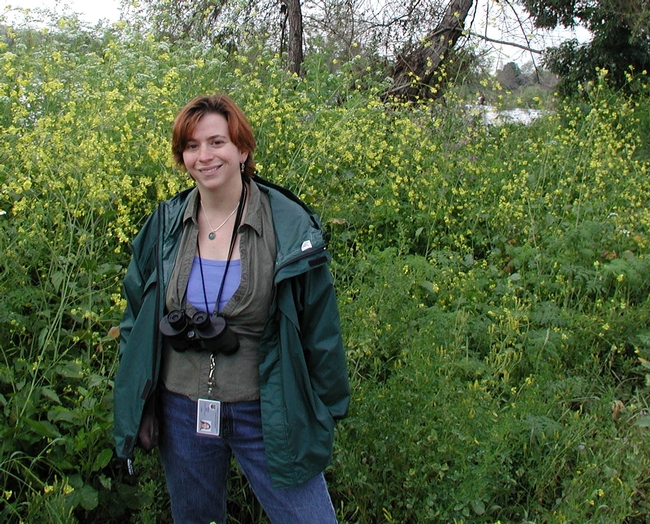Posts Tagged: invasive species
Heavy rains this winter may help native fish in the LA River make a comeback
Biologists believe a high volume of water flowing through the Los Angeles River this winter due to El Niño rain will favor native fish, reported Louis Sahagun in the Los Angeles Times. Native species - who evolved in river systems prone to sudden torrents of water, mud, bolders and debris in winter and pools and damp patches in summer - main gain an edge when the river rages.
Currently, the fish population in the river is almost entirely non-native. Released as bait by anglers, dumped by the city to eat unwelcome species, and aquarium fish set free by their owners now populate the river's waters.
The forecast heavy rains during the 2015-16 winter present an opportunity to determine whether nonnative fish will be washed out of the river and into the Pacific Ocean, giving native fish a new chance to become established.
"If we are ever going to fully understand the ecology of this river, and prospects for the return of species that evolved in it, we have to know first what's in it now, and how well those creatures do in extreme conditions," said biologist Rosi Dagit of the Resource Conservation District.
UC Cooperative Extension natural resources advisor Sabrina Drill was among a group of biologists and volunteers who surveyed the fish in the river in late November with seines, dip nets and rods and reels. After six hours, the team caught about 3,000 talapia, two dozen crayfish, a few hundred mosquito fish, one aquarium species and two Asian freshwater clams.
The research is funded by the Friends of the Los Angeles River.
Analysis says canal could create 129,000 jobs
Supes take stand against aquatic invasives
Kyle Magin, The Union
Nevada County supervisors resolved to support an inspection program for aquatic invasive species, reports Kyle Magin for The (Grass Valley) Union. The article discusses a report by Greg Giusti, UC Cooperative Extension forest and wildlands ecology advisor, which recommends water managers in the state adopt uniform measures regarding boat inspections.
The agony of the oaks
As if life weren’t difficult enough for California’s majestic oaks, they now face a brand new adversary. Already burdened by drought, wildfires, firewood harvesting and Sudden Oak Death, the Riverside Press-Enterprise reported in December that goldspotted oak borer hitchhiked from Arizona or Mexico a few years ago and is now attacking Southern California oaks.
It was identified in the Golden State in 2006 and to date has besieged coast live oak, California black oak and canyon live oak, according to an article in the December 2009 issue of UC's Oaks 'n' Folks newsletter written by Doug McCreary, UC Berkeley Cooperative Extension natural resources specialist. So far, more than 17,000 oaks have succumbed to the borer.
Unlike pests that target weakened or stressed trees, the GSOB (also called "Golden SOB" by some, according to McCreary) attacks large, vigorous and healthy trees, including those in urban yards.
"We are turning a big crank on this bug right now," the Press-Enterprise article quoted Mark Hoddle, an entomologist and director of UC Riverside's Center for Invasive Species Research. "Can you imagine Southern California without oak trees? It would be a disaster."
Even more alarming, officials believe the pest's range in California will likely expand. It's progress can be slowed with the public's help. The Press-Enterprise published the following tips for stemming the spread of GSOB:
-
Do not transport oak firewood into or out of campgrounds or parks
-
Chip infested oak wood to 1-inch pieces
-
Cover stored oak firewood with 6 mm, UV-stabilized, durable plastic tarps in the spring. Secure all the edges of the tarp to the ground to prevent beetles from escaping
-
Season oak firewood. Remove the bark and place the wood in direct sunlight
The UCR Center for Invasive Species has created a Web page with information about and photos of GSOB and damage caused by the pest. In addition, a two-page Pest Note on gold spotted oak borer, with 14 color photos, may be downloaded from the Web.

Goldspotted oak borer.
Invasive species council appoints two ANR academics to new advisory board
The Invasive Species Council of California has apointed a 24-member advisory committee that includes a diversity of environmental and agricultural experts, including two UC agriculture and natural resources scientists, according to a news release issued yesterday by CDFA.
The UC advisory board members are:
- Joseph M. DiTomaso, Weed Specialist, University of California Davis Cooperative Extension
- Larry Godfrey, Vice Chair, Department of Entomology, U.C. Davis
In addition, the board includes representatives from the Citrus Research Board, the U.S. Forest Service, the Natural Resources Defense Council, the Nature Conservancy, the California Farm Bureau Federation and many other agencies.
California ag secretary A.G. Kawamura said the 24 founding advisory board members have a challenging task ahead of them.
“They will lay the groundwork that will enable this council to enhance our collective ability to protect California’s environment, food systems, human health and economy from invasive and destructive pests, plants and diseases," the release quoted Kawamura.
The release was picked up today in the Salinas Californian, the Imperial Valley News, and Lake County News.
Invasive species currently threatening agriculture and natural areas in California include:
- Mediterranean fruit fly
- Quagga mussel
- Zebra mussel
- Asian citrus psyllid
- Gypsy moth
- Light brown apple moth
- Hydrilla
- Scotch broom
- Japanese dodder
- Japanese beetle

UC members of the ISCC advisory board.


